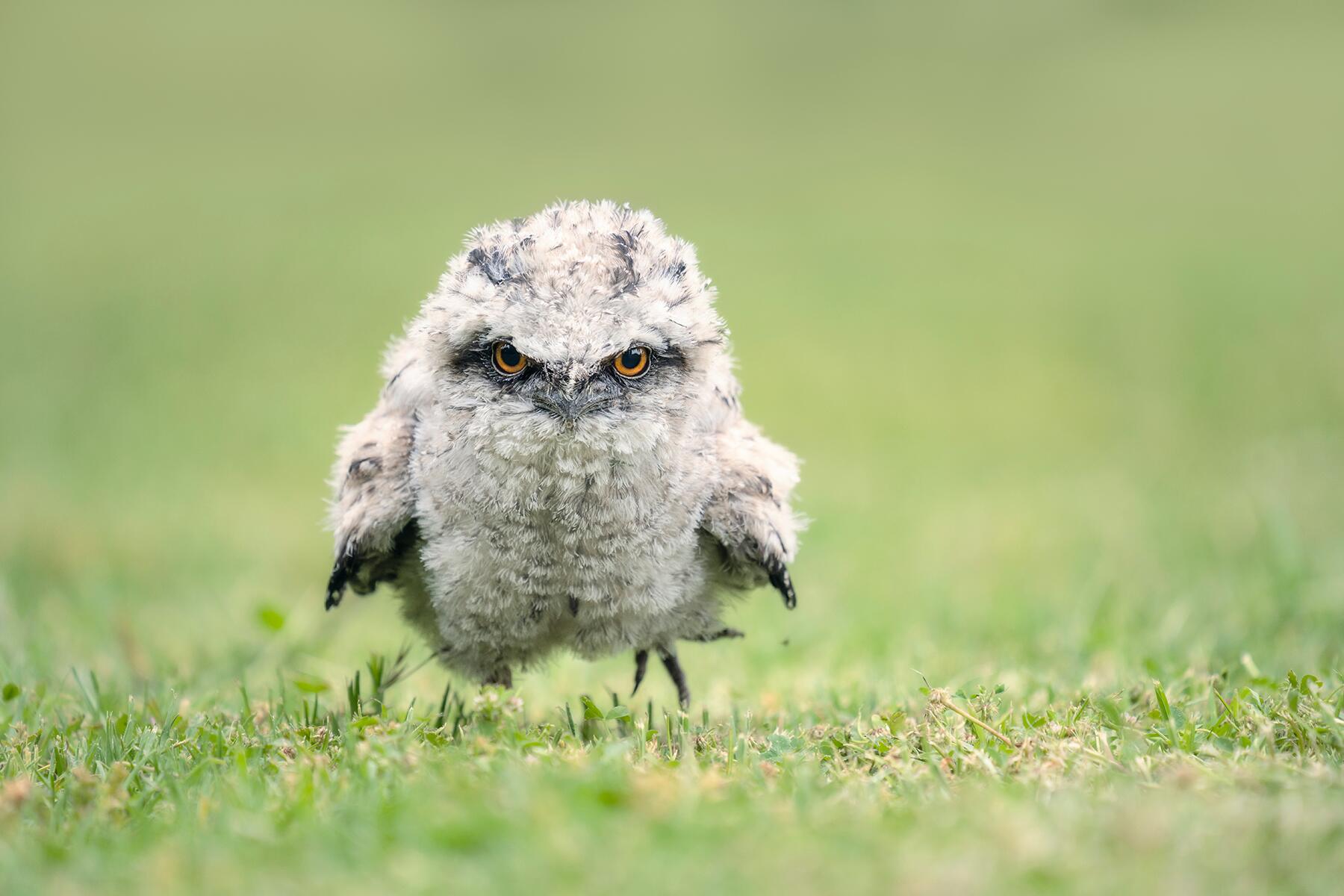- ⁄
- Travel News
- ⁄
- Outdoors
Sorry, these are...they’re birds? Are you sure?
Ah, birds: nature’s little choir members. But…I’m sorry, who are all of these guys? These are birds? Truly, you must be mistaken–these can’t be real. They…they are? Well, then, let’s get to know them. From flightless parrots who look like the ground to birds with reeds growing out of their heads to what appears to be an owl with a frog’s mouth, these are the strangest birds currently walking planet Earth.
Top Picks for You
Kakapo
WHERE: New Zealand
Looking like a bloated parrot, the kakapo is a flightless and nocturnal bird native to New Zealand. It can get up to 25 inches tall, is one of the heaviest birds in the world, and is, technically, classified as a parrot. It is very clumsy and spends its days walking around and having a beard. This guy truly looks like an old war general who got stuck in a forest and had a spell put on him that slowly caused him to resemble his surroundings. It only mates three times every 10 years.
Long Wattled Umbrellabird
WHERE: Ecuador & Colombia
With a name like “long wattled umbrellabird,” there’s a lot to expect, and everything you can expect is…right there in the name. “Long wattled” refers to the extremely long and feathered wattle that hangs underneath its beak. The “umbrella” refers to its head, which looks like a pompadour toupee–this bird straight up looks like Elvis. Native to Ecuador and Colombia, the males attract their mates by dancing (seriously).
Recommended Fodor’s Video
Magnificent Frigatebird
WHERE: Southern Atlantic and Pacific Coasts
Upon first glance, you might see the magnificent frigatebird and think, “Does that crow have a water balloon attached to its neck?” But, no, that’s just its neck. Native to subtropical coasts of the Pacific and Atlantic, this tomato-necked bird has a big red neck pouch that inflates to a ridiculous size when it attempts to attract a mate. Their wingspans are shockingly wide (up to 8 feet) and they can fly longer than most birds–but they can’t swim. You win some, you lose some.
King of Saxony Bird of Paradise
WHERE: New Guinea
When the king of Saxony bird of paradise, a bird-citizen of New Guinea, is simply relaxing, it looks like a regular (yet incredibly beautiful) bird. However, the moment it opens its mouth, it sounds like an alien transmission is suddenly occurring. How is all of that clicking coming out of that bird’s unmoving, open beak? Seriously, how? Another otherworldly aspect to this little fellow is the extremely long plumage that sticks out of its head, which can grow to 20 inches long when, say it with me, the male is trying to attract a mate.
Shoebill
WHERE: Central-Eastern Africa
Ah, the shoebill: the bird who looks like it rules Hell itself. Please welcome God’s most frightening villain to this list of birds–the one true king of darkness has arrived, folks. Native to Central-Eastern Africa, the shoebill is a gargantuan creature, growing as tall as 55 inches with a wingspan of over eight feet long. This is a big boy with a mean face, but he’s also an endangered species, so let’s go easy on him, OK? This guy has one of the biggest beaks of all of the birds on planet earth–it’s about 12 inches long, and it’s shaped like a shoe (thus, the name). The beak is complete with a terrifyingly sharp hook, meant to capture fish, snakes, and other small animal dinners.
Marabou Stork
WHERE: Sub Saharan Africa
That’s right. A stork. However, this is not your run of the mill “here is a baby for you” stork–this guy looks like he will eat your firstborn and then sit down in your living room and smile like nothing happened. No, but seriously, he is actually known for looking like the grim reaper. He’s balding, always–frankly, it looks like his head is rotting away. This guy is a mess, and not just because of his appearance–he feeds off of dead animals and human waste. He’s not all bad though–the marabou stork plays a necessary role in the ecosystem by cleaning up waste (you know, because he eats it).
Hoatzin
WHERE: Northern and Central South America
This bird smells terrible. I’m not being rude–it’s known for smelling bad. The species is also known for its bizarre appearance–it looks like a dinosaur, but a kids’ show cartoon dinosaur where dinosaurs go to high school and drive motorcycles. This guy’s head is topped with what looks like spiky cool-guy hair. Native to Northern and Central South America, this dinosaur looking pheasant lives in groups in the swamps of the Amazon basin.
Great Sage Grouse
WHERE: North America
I know we’ve spent some time talking about several rather interesting mating habits of birds, but the great sage grouse may just take the cake as the most dramatic one of them all. Native to North America, this bird is known for having huge breast sacs that inflate to an alarmingly large degree when trying to attract a female partner. It has a huge body and a tiny little head, and it also boasts some fanciful, spikey plumage on its backside–imagine a turkey but make it fashion.
California Condor
WHERE: Southwestern United States
Ah, yes, Satan’s second in command himself. Please welcome Halloween’s finest! The California Condor is an all-American bird, found in Arizona, California, and Utah, and boasts a huge wingspan (about 10 feet) as well as the head of the devil…OK, not really. Actually, the California Condor is such a large boy that he is often confused for looking like an actual plane. And to further his “grand vizier of hell” look, his pink, rotten-looking little head is surrounded by what something like a black feather boa. He feasts on dead animals and can live up to 60 years.
Rhinoceros Hornbill
WHERE: Southeast Asia
“Well, well, well, would you look who it is: Old Two Beaks, alive and in the flesh” is probably how this bird would be greeted if he walked into his high school reunion. Native to Southeast Asia, this guy spends his days roaming around the mountain rainforests and having a fake beak on top of its actual beak. It’s not actually a second beak: it’s a little red and orange colored horn, used to amplify its voice, so that everybody in the whole forest can hear it scream. The rhinoceros hornbill has a particularly rude mating habit, as well, where the male essentially traps the female in a tree trunk after she lays an egg (with mud, usually), leaving only a tiny little hole in it so that he can feed her. She also has to defecate out of this hole, by the way.
Tawny Frogmouth
WHERE: Australia
With a name like Frogmouth, how could you go wrong…oh, what the hell is THIS? Is this an owl? No, no. It’s not an owl. It simply looks like an owl and it has a mouth that resembles that of a frog (thus…the name). The Tawny Frogmouth is much weaker than an owl, so it’s a good thing that its specialty is camouflage. It blends right into the trees, making it incredibly hard to spot in the wild. These sweeties mate for life, and hardly ever leave their habitat–relatable, honestly!





